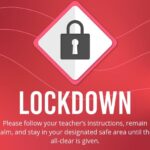RALEIGH, N.C. – During last school year, North Carolina public schools reported 10,959 acts of crime and violence among the state’s almost 1.4 million students, according to the 2005-06 Report on School Crime and Violence presented to State Board of Education members Dec. 7.
This total correlates to 7.90 acts per 1,000 students, an increase from 2004-05 when that number was 7.49 acts per 1,000 students. Most of the increases were reported in categories of “possession” rather than acts of violence: possession of a controlled substance in violation of law, possession of a weapon excluding firearms and powerful explosives and possession of an alcoholic beverage.
Although the 2005-06 Report on School Crime and Violence shows increases in the number of acts reported by local school districts, it’s important to note that nearly one-half (43 percent or 998 schools) of all schools reported no acts of crime or violence. In fact, 75 percent (1,746 schools) of all schools reported five or fewer acts last year.
State Board of Education Chairman Howard Lee said that although these numbers show that most public school students are focused on getting a good education, the increased trend in the number of acts of crime and violence committed highlight the importance of remaining vigilant. “The numbers show that schools continue to be safe learning environments for students and teachers. We know that our work in this area is never complete, and we will continue to work on ways to ensure safety in every school and for every student and educator.”
State Superintendent June Atkinson noted that it will take the entire school community’s involvement to have an impact on school crime and violence. “Schools continue to be one of the safest places for our children. Yet, for some of our students, that is not always the case. We need for our principals and teachers to remain vigilant and report inappropriate activities. We need parents to ensure that their children know the importance of respecting the law and the consequences for breaking it, and we need the community to emphatically demonstrate that any act of crime or violence will not be tolerated.”
Atkinson added that the North Carolina Department of Public Instruction remains committed to providing technical assistance to local districts to help them address this barrier to high academic achievement.
As in past reports, four categories of incidents are responsible for 93 percent of all reported offenses. They are possession of a controlled substance in violation of law, possession of a weapon excluding firearms and powerful explosives, possession of an alcoholic beverage and assault on school personnel not resulting in serious injury.
Seven incident types decreased in 2005-06: assault resulting in serious injury, bomb threat, possession of a firearm or powerful explosives, sexual assault not involving rape or sexual offense, robbery without a dangerous weapon, burning of a school building and rape.
The total number of occurrences for each reportable act is listed below. Categories marked with an asterisk experienced an increase in 2005-06.
- Possession of a controlled substance in violation of law 4,427 *
- Possession of a weapon excluding firearms and powerful explosives 3,845 *
- Possession of alcoholic beverage 1,053 *
- Assault on school personnel not resulting in serious injury 862 *
- Assault resulting in serious injury 176
- Bomb threat 134
- Possession of a firearm or powerful explosives 128
- Assault involving use of a weapon 111 *
- Sexual offense 89
- Sexual assault not involving rape or sexual offense 62
- Robbery without a dangerous weapon 42
- Taking indecent liberties with a minor 20 *
- Burning of school building 4
- Robbery with a dangerous weapon 3 *
- Kidnapping 2 *
- Death by other than natural causes 1 Rape
As in previous years, the number and frequency of acts is the lowest in elementary schools (grades pre-K-5) and highest at the high school level.
As with many types of crime reporting, it is difficult to gauge causes for annual increases or decreases. Changes in overall numbers and rates per 1,000 students can be the result of more thorough reporting and better enforcement of laws in addition to actual increases in the number of offenses committed on school grounds.
This report is based on information provided by all 115 local school districts and 94 public charter schools. Under North Carolina law, schools are required to report certain acts of crime and violence to law enforcement. In addition, the law requires that the State Board of Education monitor and report annually on incidents of crime and violence in public schools. This reporting requirement began in 1997-98 with 14 reportable acts, a list that was expanded in 2001-02 to its current 17 reportable acts.
For more information regarding the crime and violence report, please contact the NCDPI’s Communications division at (919) 807-3450 or visit www.ncpublicschools.org.
_______________________________________________________
Public Schools of North Carolina, State Board of Education press release












